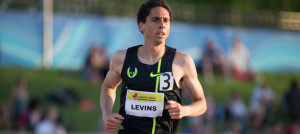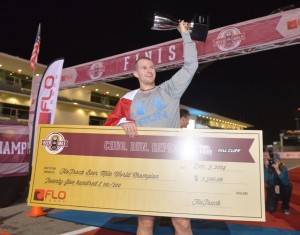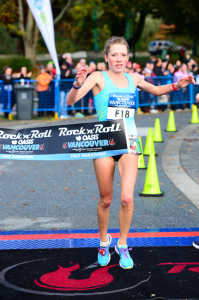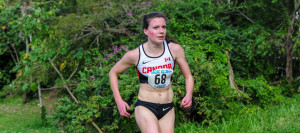Train for your fastest ever 5K
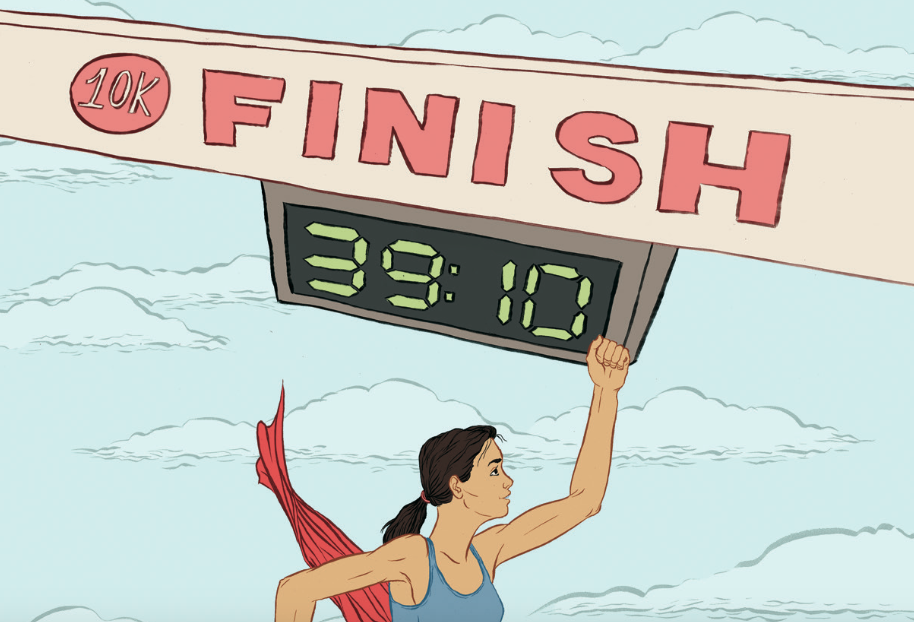
Over the last decade, distance running has become accessible to all. Learn-to-run groups and widespread access to training information has benefited everyone, from the elites to the back of the pack. The half- and full marathon are no longer as mysterious and improbable to finish as they once were for many runners. They offer a challenge that requires runners to push the boundaries of one’s endurance, but they can be done. Even ultras don’t seem nearly as daunting as they once were.
But we could all benefit from going faster now and again. Perhaps we have lost some appreciation for how challenging it is to race a distance under 10k. I challenge the runners that I coach to think of the 5k and 10k differently: racing a 5 or 10k is not about completion; it is about speed, no matter how fast you are. It is about pushing the limit of your speed and stamina and raising your ceiling on your pain tolerance in pursuit of a faster personal best time. No matter what your ability level is, or how fast you are, chasing a PB is a great challenge, and there are no better distances for everyone to give a try than 5 and 10ks.
So, why not register for a few 5’s and 10’s this year? But be warned: racing them requires almost as much preparation as one of the longer races.
Step One
Prepare Specifically for the Event
In order to properly assess your 5 and 10k fitness and determine realistic pace targets for the distances, complete race specific interval workouts in the eight weeks leading up to the race. These race specific sessions will aim to improve your speed and stamina and increase in specificity as the race draws near.
Workout 1
6 x 800m at goal pace with 400m slow jog recovery
Workout 2
5 x 1,000m at goal race pace with 400m slow jog recovery
Workout 3
20 minutes at goal race pace
Workout 4
10 x 400m at 10 seconds/K faster than race pace with 200m slow jog recovery
Workout 5
4 x 1,200m at 5-8 seconds/K faster than race pace with equal recovery passive rest
Workout 6
3 x 1,600m at race pace with 90 seconds rest + 1K at race pace
Workout 7
2 x 2K at 5K pace + 5 seconds/K with 400m jog recovery
3 x 800m at 5 seconds/K faster than race pace with 90 seconds rest
4x 400m at 10 seconds/K faster than race pace with 200m jog recovery
Workout 8 (Pre-race prep)
3K tempo at race pace + 15 seconds/K with 2 minutes rest
2 x 1K at race pace
3 x 400m at faster than race pace but feeling in control
NOTE:
These workouts assume a training load of at least 35k/week – one long run at 10–15k, the quality workout and one other aerobic run (8k) per week.
Tips from Canada’s best
Canadian Junior 5,000m record holder
Hometown: Toronto
PB: 13:34 5K
Thoughts during the race “During a tough race I think about all the work I have put in. I find that if I think about the race too much it doesn’t have a positive impact on me. I like to treat races like workouts and keep my normal routine.”
For developing speed “This is the workout I did before I broke 4:00 in the mile this year: 4 x 200m at mile pace, then 2 x 1,200m at slightly slower than 5K pace (try to make the second 1,200m faster than the first), then 3x300m at your mile pace.”
On calming nerves “This is actually something I had to deal with recently in my college career. I found I was getting too nervous before races. Now, I try to waste time and not think about the race until the warm-up.”
One great piece of advice from a coach “Never underestimate yourself. Many times, I have been put in situations where I have doubted if was ready for a hard workout or race. I find that if you go in with confidence and believe in yourself, it helps out in a very positive way.”
National record holder in the 5,000m and 10,000m
Hometown: Black Creek, B.C.
PBs: 13:15:19 (5,000 outdoors), 27:27:96 (10,000m outdoors)
The 26-year-old from Black Creek, B.C. is one of the most promising runners Canada has ever produced. He trains in Oregon with double Olympic gold medallist Mo Farah under famed coach Alberto Salazaar. Currently, Levins is the second fastest Canadian in history at both the 5,000m and 10,000m.
What’s your favourite workout to prepare for a 5 or a 10K?
I like 1K repeats or mile repeats to develop speed. My coach varies the amount of miles
or 1Ks for the event I’m preparing to do. You’ll want to do about five 1Ks to prep for a 5K race, and the same goes with miles and 10K – you should aim for about six.
Do you taper for a big race?
I run every day, even when coming into a big race. I back off on bigger mileage for a key race on race week, and run pre-race workout a couple of days beforehand.
How do you warm up for a 5 or 10K?
We do a full warm-up, starting about an hour before hand, 5–7K. I do a bunch of drills, and the last and most important thing is to do some strides. If I’m running late for the race and I only have time to do one thing, it’s always strides. They are key.
Share some mental tips you use for getting through a tough race or workout.
We work regularly with a sports psychologist as a part of the staff here in Oregon. His big thing is making sure you are focusing on three things you want to work on going into a race. So, I’ll decide, say, that I really want to work on my finish, for example. But I don’t visualize the exact outcome of the race, I’m not sure if that’s healthy. People can get ahead of them- selves. You need to stay in the process and the moment. You can’t let yourself worry about things that have happened, or get ahead of yourself to things that may not even happen in a race.
Do you keep a training journal?
Even though the coaching staff keeps track of what I’m doing, I still keep my own log. I think it’s really important to have. I’m still not perfect at it, but I know that it’s one of the easiest ways to improve your running; it’s important to have that reference.
How do you manage pre-race nerves?
The more you race, the less you end up getting them. Even when I got to the Olympics in London and stepped in the stadium, I thought it was going to be fun. I try to limit how much I’m focusing on it. I try to keep my focus to the day, and try to distract myself leading up to the race. Nerves are important to have, they give you a nervous boost. But they should leave you as soon as you start race.
During the race, I really focus on keeping my body as relaxed as it can be. I don’t think too much about breathing, just more generally staying loose and focused as I run.
STEP TWO
Determine Your Goal Pace
The pace that you are able to sustain for your most specific workouts (workouts 5, 6 and 7) is a realistic pace target for the race.
STEP THREE
Plan Your Strategy
Before planning your strategy, it’s important to consider the course profile of the race as it will impact how you are going to use your energy at various points in the race. Since you are trying to run fast, consider a course that is more flat and straight.
Assuming a relatively flat course for the race, here is how you may consider racing the 5k (for the 10k, apart from the opening and closing kilometres – which should be approached the same as the 5k – just multiply each segment by two in order to structure your effort accordingly):
 0-1K
0-1K
The Objective: Aim to run 5 seconds/K faster than goal pace
The Challenge: With the adrenaline of the race start, resist the urge to run too quickly in the first 500m–1k of the race. Even if it feels relaxed, there is a high likelihood that you will be going too fast, so be aware of your pacing and aim to run no faster than 5 seconds/k above your goal pace from the start.
Mental Tactics and Cue: Flow with the race, but don’t let the energy distract you from your awareness of your speed and exertion.
“I am in control of my pace.”
1-2K
The Objective: Find your rhythm at goal pace
The Challenge: After a faster first K, find your rhythm at race pace. If you are used to longer distances, be careful that you don’t ease off the pace too much. You need to stay focused and engaged with the race.
Mental Tactics and Cue: Be aware if you are slowing or zoning out. Look up to runners ahead of you to keep forward momentum.
“I am strong and focused on my pace.”
2-3K
The Objective: Commit to your pace
The Challenge: This is the point in the race where the inten- sity of the 5k race starts to set in. It’s essential that you make a conscious decision to stay committed to your pace even if it feels hard. At this point in the race, the intensity is high and it should feel hard.
Mental Tactics and Cue: Reassure yourself that you can handle this intensity.
“I am working hard but can handle this intensity.”
3-4K
The Objective: Fight the urge to slow down
The Challenge: This is the make-or-break point in the race. With your effort nearing max intensity, your brain is going to try to slow you down. This is your brain’s job – it needs to preserve the body at all costs. Come armed with some mental tactics that you can use to keep you from backing off the pace.
Mental Tactics and Cue: Break the next k into three parts and look ahead to a landmark 400m away. Get to that landmark and refocus to the next target. Just don’t let your mind think too far ahead.
Breathe into your legs and repeat “I am trained for this. I can push through this discomfort.”
4-5K
The Objective: Finishing kick
The Challenge: You are running full throttle now but the finish line is in sight so the mental demons that you battled from 3–4k may ease up. Keep your foot on the gas until you are 200m out from the finish and then see what you can do with your final sprint.
Mental Tactics and Cue: Latch onto a runner 20 m ahead of you and imagine them pulling you forward. Try to accelerate with 500m to prevent slowing off the pace. Consider this the wind up to your final sprint.
“I am running to the finish. I need to leave it all out here.”
Tips from Canada’s Best
Canadian record holder over 10,000m
Hometown: Vancouver
PB: 16:00 5K, 31:41.59 10,000m (outdoors)
Vancouver’s Natasha Wodak bounced back from a year of injuries and broke the Canadian 10K record, that stood for 12 years, earlier this year in California. In the process, the 33-year- old qualified for her first Olympics. She trains with some of the best runners in the country as a part of the B.C. Endurance Project.
What’s your favourite workout to prepare for a 5 or a 10K?
Five miles, with three minutes rest at just a bit faster than 10K pace. If I can nail this I know I’m ready for a good one. I did four mile repeats in 4:58, 4:57, 4:54 and 4:53 two weeks before I set the record. It was a great confidence builder.
What do you eat the night before and morning of a 5 or 10K race?
The night before I keep it simple and never try anything new. Usually, I go with whole wheat pasta with tomato sauce and chicken and a side salad. The morning of the race I usually keep it light and stick with an energy bar, a banana and a coffee and then sip on a light energy drink.
Besides running, what do you do that you think is essential for all runners training
for a 5 or 10K?
I strength train two times a week and have for years – no skipping! It’s made a huge difference in my running. I also pool run once a week the morning after a big workout on the track to help my body recover. I do drills three times a week before workouts as well.
What’s the best 5 and 10K training advice you’ve received?
My coach Rich Lee always tells me that in training I should relax. You don’t need to hammer every workout. Recovery and rest is a key part of my training.
How much do you sleep, both in training and the night before a big race?
I try to get 8–10 hours a night. But the night before a race doesn’t really matter. I got two hours the night before I ran my PB at this year’s NYC Half. As long as you’ve had enough rest throughout the week, the night before doesn’t matter that much. Excitement and nerves will carry you through.
What do you do to stay relaxed leading up to a race?
I didn’t race until 9 p.m. when I ran the 10,000m Canadian record, so I had all day to be nervous. So Lanni Marchant (who was also racing) and I went to the movies. For a few hours we just relaxed and took a break from worrying about the race. It was great. And we both qualified for the Olympics that night!
What’s your running mantra?
Live in the present. Enjoy each race as if it were your last.
Beer Mile World Champion
Hometown: Winnipeg
PBs: 15:03 5K, 30:31 10K
Strides on easy days “A great way to develop speed is by doing strides at the end of easy runs or long runs. Nothing crazy hard, as they’re just for opening up the stride and staying relaxed. I also love this pyramid workout: a few sets of 300m, 600m, 1,200m, 600m, 300m.
Cross-training and core work “I do lots of core and circuit work for all-around strength. I think a strong trunk is key for the end of a race to hold everything together. I also cycle and recently started dabbling with Pilates.”
Start your race right “A coach once told me that the first mile is make or break. Going out too hard, even by just a few seconds, can really hurt you later on.”
Travel tip “When I travel for races, I always bring my own pillow.”
2014 Vancouver Sun Run Winner
Hometown: Vancouver
PBs: 15:33.15 5K, 32:54 10K
A great 5K workout “One of my favourite workouts my coach gives me for the 5K is 2 x 2,400m + 1,000m, with a 400m jog between the 2,400m and six minutes before the 1,000m. Paces: for the 2,400m sets, alternate between 200m at half-marathon pace and 400m at 5K goal race pace. For the 1K, run the first 600m at 5K pace, and the final 400m all-out. It starts out being easy but the gear changes fatigue you by the end.”
The pre-race meal “I always try to have Thai curry the night before a race. I love Thai food and, for some reason, have got really into it before races. It’s a substantial meal but easy on my stomach.”
Use hills to develop speed “I love combining hill sprints and track work to build speed – one workout I did a few times last winter to build speed was 8 x 200m hills. In Vancouver these are big hills.”
A running mantra “For the first half of races I often say to myself ‘relax’ and ‘patience’ over and over again. It’s important to be engaged, but remember that the tough part doesn’t really start until the second half.”
2014 Commonwealth Games, Qualified for 2016 Olympics
Hometown: Calgary
PB: 15:06 5K
One workout “6 x 1,000m with 3:00 rest is a bread-and-butter 5K workout. I do this one periodically through my training to gauge my fitness, and find it correlates fairly well with what I can actually run in a race.”
Make it happen “Before a breakthrough race, my coach wrote ‘make it happen‘ on the back of my bib. The training was done, I was ready, and it was now up to me to finish the task. By the time you show up to a race, all the hard work is over, you just have to ‘make it happen.’’’
The cool down is key “I try and cool down for 15–30 minutes. It’s easy to get distracted by friends and festivities, but cooling down definitely helps to speed recovery.”
Favourite core exercise “Chin-ups are a great way to strengthen your upper body and core, both of which help to stabilize running form as you fatigue. A strong runner is a fast runner.”

